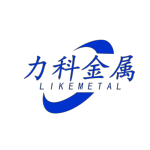Stainless steel (Stainless Steel) is defined in GB/T20878-2007 as a steel with stainless steel and corrosion resistance as its main characteristics, with a chromium content of at least 10.5% and a carbon content of not more than 1.2%.
Stainless steel is weldable
Different product uses have different requirements for welding performance. A class of tableware generally does not require welding performance, and even includes some pot enterprises. However, most products require good welding performance of raw materials.
Stainless steel is corrosion resistant
Most stainless steel products require good corrosion resistance, such as first and second class tableware, kitchen utensils, water heaters, water dispensers, etc.
Stainless steel with polishing properties
In today’s society, stainless steel products are generally polished during production, and only a few products such as water heaters and water dispenser liner do not need polishing. Therefore, this requires that the polishing performance of the raw material is very good. The main factors that affect the polishing performance are as follows:
① Surface defects of raw materials. Such as scratches, pitting, pickling, etc.
② The problem of raw materials. If the hardness is too low, it will not be easy to polish when polishing (the BQ property is not good), and if the hardness is too low, the orange peel phenomenon is easy to appear on the surface during deep drawing, thus affecting the BQ property. BQ properties with high hardness are relatively good.
③ For the deep-drawn product, small black spots and RIDGING will appear on the surface of the area with a large amount of deformation, thus affecting the BQ performance.
Stainless steel is heat resistant
Heat resistance means that stainless steel can still maintain its excellent physical and mechanical properties at high temperatures.
Stainless steel is corrosion resistant
When the amount of chromium atoms in the steel is not less than 12.5%, the electrode potential of the steel can be abruptly changed from negative potential to positive electrode potential. Prevent electrochemical corrosion.
Post time: Aug-03-2022





